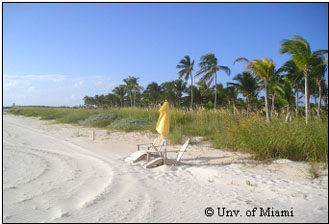


INTRODUCTION
For developments, the “use of integrated management approaches to carry out restoration programmes effectively in areas that have been damaged or degraded by past activities” is advocated by the UNEP (2005). Previous usage of BBC property left many areas degraded, therefore
a mitigation and restoration program was incorporated into the EMP to maintain and restore some of the property’s natural ecology. Ecological degradations coastally and onshore stemmed from improper waste disposal, the bulldozing of sand dunes and the invasion of Australian
pine (Casuarina equisetifolia) trees. Near shore marine habitats had been impacted by debris and resultant siltation from a dredged cruise ship turning basin. The mitigation and restoration program featured the clean-up of wastes, a large-scale coastal restoration project and the construction of an artificial reef.
1) COASTAL RESTORATION
The life history and threat of Australian pine (Casuarina equisetifolia) in the Caribbean
The coastal environment is the area where the land meets the sea and dominates small island ecology. The coastal zone includes areas of dunes, beaches, rocks, low cliffs, wetlands, bays and coves, and often refers to both the marine and terrestrial habitats that occur near the shoreline. A common threat too many tropical coastal areas in north, central, and south America, and the Caribbean is the proliferation of the invasive species, Australian pine (Casuarina equisetifolia). This invasive species is a cause for concern because it germinates very quickly and forms dense clumps that shade out the native flora. Also, Australian pine may produce a toxic leaf litter that inhibits the germination of seeds of other species
(Hammerton 2001). In areas where the Australian pine establishes, native, dune building species are out competed and the coastline becomes altered from a dune, stable coast to a flat, unstable shore with a recessed coastline, susceptible to erosion (Sealey 2003).
Figure 6.1. Evolution of naturally vegetated beaches versus Casuarina sp. (Australian pine) dominated.
Neil Sealey, 2003.
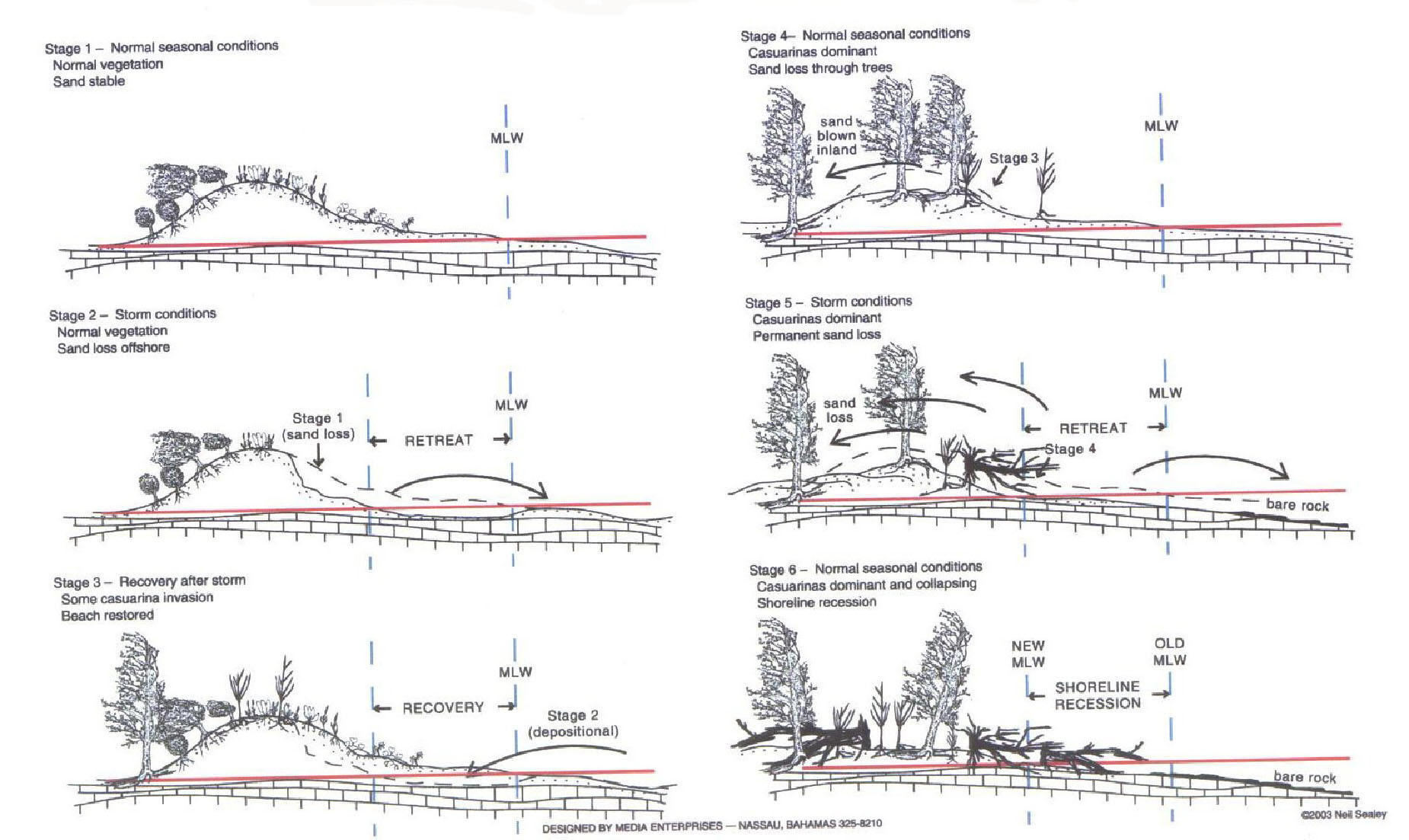
The Bahamas
In The Bahamas, the majority of tourism
facilities are sited within 800 meters of the
high-water mark. In a zone that can be both unstable and vulnerable to
geological and oceanographic phenomena, very little disturbance is required to
destabilize such environments and lead to significant ecological degradation
both above and below the water (Lowe and Sealey 2003). Having been introduced
into The Bahamas, Casaurinas have become very problematic. They are commonly
referred to as Australian pine, sheoak, or beefwood, and
they are a well-known component of the Bahamian landscape (Rodgers
2005). Because of their potential threats to coastlines and native fauna,
Casuarinas have been labeled a ‘‘clear and present danger’’ in The Bahamas
(Hammerton 2001).
The coastal restoration project at Baker’s Bay Club had two phases: part one to remove the invasive species, the second to restore the dunes. Once removed, the Australian pines were then chipped and the mulch was used throughout the property to cover roads. A dune restoration plan was outlined which noted contouring and vegetation planting guidelines. Core plants utilized were Bay Lavender (Mallotonia gnaphalodes), Sea Oats (Uniola paniculata), Panic Grass (Panicum amarulum), Slender Paspalum (Paspalum caespitosum) Bay Geranium (Ambrosia hispida), Beach Bean (Canavalia maritime), Ink berry (Scaevola plumieri), Beach Spurge (Euphorbia trichotoma), Spider Lilly (Hymenocallis arenicola), Love Grass (Eragrostis ciliaris), Sea Purslaine (Sesuvium portulacastrum)
and Sea Grape (Coccoloba uvifera).
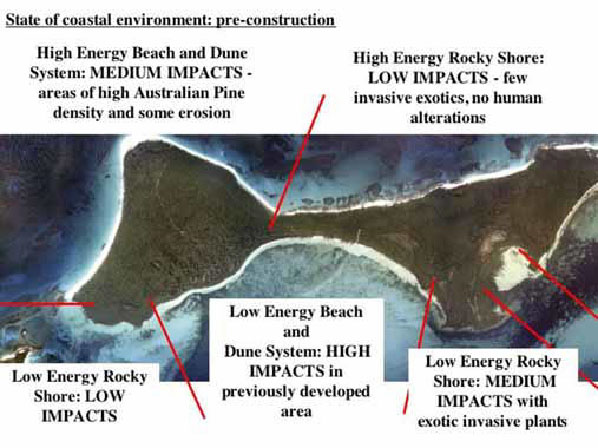
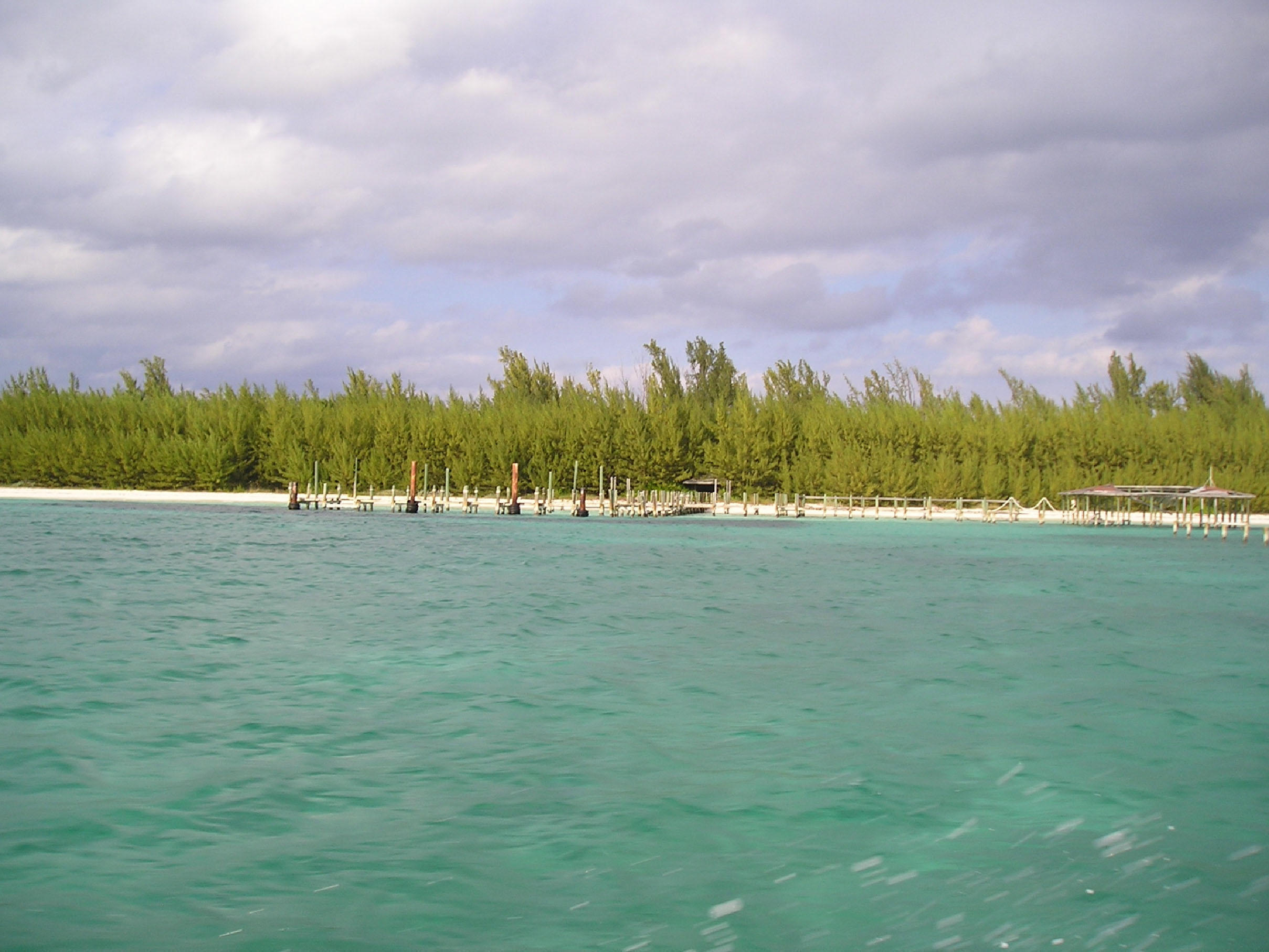

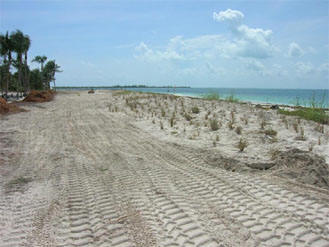
![]()
![]()
![]()
